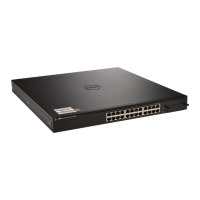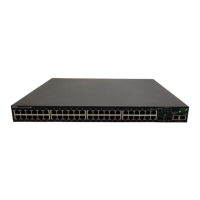240 Managing General System Settings
The switch can obtain the time from a Simple Network Time Protocol
(SNTP) server, or you can set the time manually. Table 12-2 describes the
settings that help the switch keep track of time.
Why Does System Information Need to Be Configured?
Configuring system information is optional. However, it can be helpful in
providing administrative information about the switch. For example, if you
manage several standalone PowerConnect 8000/8100-series switches and have
Telnet sessions open with several different switches, the system name can
help you quickly identify the switch because the host name replaces
console as the CLI command prompt.
The Banner can provide information about the switch status. For example, if
multiple users connect to the switch, the message of the day (MOTD) banner
might alert everyone who connects to the switch about a scheduled switch
image upgrade.
Table 12-2. Time Settings
Feature Description
SNTP Controls whether the switch obtains its system time
from an SNTP server and whether communication
with the SNTP server requires authentication and
encryption. You can configure information for up to
eight SNTP servers. The SNTP client on the switch can
accept updates from both IPv4 and IPv6 SNTP servers.
Real time clock (RTC) If SNTP is disabled, you can manually enter the system
time and date.
Time Zone Allows you to specify the offset from Coordinated
Universal Time (UTC), which is also known as
Greenwich Mean Time (GMT).
Summer Time In some regions, the time shifts by one hour in the fall
and spring. In the United States, this is called daylight
saving time.

